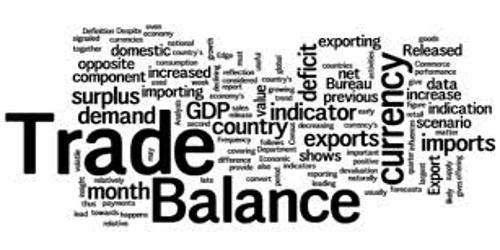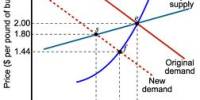Commercial Balance also known as the balance of trade is a trade surplus is an economic measure of a positive balance of trade, where a country’s exports exceed its imports. The commercial balance, or net exports, is the difference between the monetary value of a nation’s exports and imports over a certain time period. It is the difference between the value of a country’s imports and exports for a given period and is the largest component of a country’s balance of payments (BOP). Sometimes a distinction is made between a balance of trade for goods versus one for services. This term is used to help economists and analysts understand the strength of a country’s economy in relation to other countries.
The balance of trade measures a flow of exports and imports over a given period of time. It is the difference in value over a period of time between a country’s imports and exports. A country that imports more goods and services than it exports in terms of value has a trade deficit while a country that exports more goods and services than it imports has a trade surplus. The notion of the balance of trade does not mean that exports and imports are “in balance” with each other. It is the calculation of a country’s exports minus its imports.
The formula for calculating trade balance is as follows:
Commercial Balance (net exports) = Value of Exports – Value of Imports
Where:
- Value of Exports is the value of goods and services that are sold to buyers in other countries.
- Value of Imports is the value of goods and services that are bought from sellers in other countries.
When a country imports more than it exports, the resulting negative number is called a trade deficit. When the opposite is true, a country has a trade surplus. If a country exports a greater value than it imports, it has a trade surplus or positive trade balance, and conversely, if a country imports a greater value than it exports, it has a trade deficit or negative trade balance. If the value of imports is greater than the value of exports we say a country has a trade deficit. A positive trade balance indicates a trade surplus while a negative trade balance indicates a trade deficit. A trade surplus can create employment and economic growth, but may also lead to higher prices and interest rates within an economy.
- A positive balance occurs when exports > imports and is referred to as a trade surplus.
- A negative trade balance occurs when exports < imports and is referred to as a trade deficit.
Though, a positive commercial balance or net exports does not necessarily indicate a healthy economy, nor does a negative one necessarily indicate a weak economy.
















